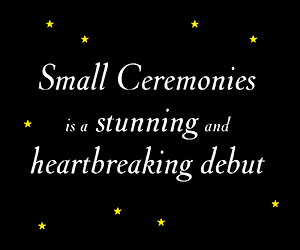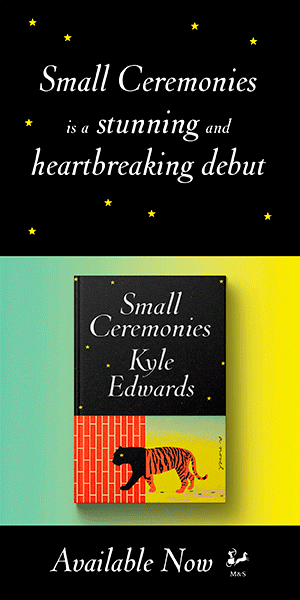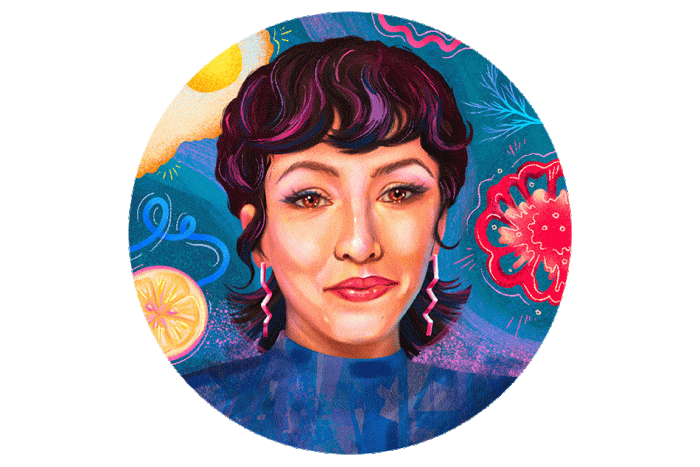Welcome to the first instalment of “Brown Hollywood,” a three-part series of essays by Mayukh Sen exploring undertold stories of South Asian performers in Hollywood’s Golden Age.
William Henry Pratt wasn’t much like the other boys at school. Growing up in London during the late nineteenth century, he had a lisp, a stammer, and a bow-legged gait that made him a honeypot for bullies. He appeared graven-faced in photographs, always the odd one out. He looked quite different from his classmates, with those heavy eyebrows, inkjet-black hair, and permanently sun-kissed skin.
Born in 1887 in Dulwich, in the south of London, Pratt was the youngest of nine children sired by a loutish, twice-widowed 61-year-old father and a 39-year-old mother. Distanced from his closest sibling by five years, Pratt was effectively an only child, and home was an unhappy place. Pratt’s mother separated from her husband when he was two, claiming that the man beat her and the children. His father then absented himself from the boy’s life, leaving him nothing upon his death a few years later, when Pratt was thirteen. His mother died not long after, placing him in the care of a half sister from his dad’s side who was nearly as old as his mother. Pratt would maintain, in adulthood, that both of his parents had died when he was just a baby, a distortion of a traumatic truth.
But the outside world wasn’t much kinder. Both of his parents were Anglo-Indian—of mixed South Asian and white descent—hailing from what was then called Bombay, now Mumbai. Back in British India (encompassing present-day Bangladesh, India, and Pakistan), Anglo-Indians occupied a position that the dominant British class looked upon with disdain; they often found themselves unable to assimilate amongst white British or South Asian populations. Though Pratt’s father had worked in the Indian Civil Service, that position did not inoculate him or the family from prejudice. Most of Pratt’s siblings had been born on the subcontinent, but the family migrated to Britain in 1879 after a bitterly difficult few years in Bombay. The intolerance carried over to Britain, where students would ask Pratt’s brothers to perform the apocryphal Indian rope trick as a form of disparagement.
Pratt found an escape chute from a fractious family life and a prejudiced society in the theatre. He would accompany the families of his few friends to theatrical productions, watching others play pretend across the footlights with rapt fascination. The acting itch overcame him at the age of nine, when he fitted himself into a pair of black tights and a skullcap to become the Demon King in a church production of Cinderella. His artistic inclinations made him an outcast in a family of outcasts. Most of his siblings had followed in their father’s footsteps, marching into the Civil Service. There was one notable exception: a brother who went by the stage name George Marlowe. He was Pratt’s idol. A former stage actor who now occasionally moonlighted as an acting coach, George embodied all that young Pratt wanted to make of his own life. But when Pratt expressed his intentions to some of his other brothers, they bluntly responded that he was neither talented nor good-looking enough to hack it in that profession like his brother George.
But Pratt was determined, unusually so, and his passion for acting continued unabated through his schoolboy years and into his enrolment in King’s College at the University of London in 1906. It was a time he spent watching plays like Richard II and The Tempest at His Majesty’s Theatre more often than studying. Upon turning twenty-one, he came into an inheritance that his mother had bequeathed him upon her death years earlier. He would use that tiny sum of money as a ticket to flee his family for good. He tossed a coin to determine which outpost of the Empire he’d seek refuge in, Australia or Canada. It landed on heads. And so, when he was twenty-one, William Henry Pratt made a beeline for British Columbia.
Acting work was hard to come by in Canada, so he worked odd jobs digging ditches, laying streetcar tracks, shovelling coal. But this gruelling manual labour in no way cooled what he said was “blood fired for the stage.” In 1911, when he heard about an opening in an acting stock company in Kamloops, he jumped at the chance. The troupe was so desperate for talent that all they required of an actor were two legs and a head. But Pratt had other factors working against him: this was a period in history when his skin colour would limit his chances at long-lasting success.
As he snaked his way towards Kamloops, Pratt figured reinvention was needed. Concealment ran in the family. Pratt’s maternal great-aunt was Anna Leonowens—who would later become the famed subject of Margaret Landon’s 1944 novel Anna and the King of Siam and the 1951 Rodgers and Hammerstein musical The King and I. She, too, had hid her South Asian ancestry to retool herself into a scion of the white, British elite. Perhaps he could undergo a version of this transformation. Once he reached Kamloops, he thus decided he would give himself a new name, thereby effacing his Anglo-Indian roots. From now on, he would call himself Boris Karloff.
*
With his slumberous speaking voice and a carriage that was at once both gentle and commanding, Boris Karloff would go on to cement himself as an icon of horror cinema. Despite amassing a truckload of screen credits up until his death at 81, in 1969, two of his films have endured for reasons beyond the perfume of menace that he brought to his characters: he would play a misunderstood monster aching for connection in James Whale’s Frankenstein (1931) and subsequent sequels; and a year later, he would play the tormented, centuries-old Egyptian priest Imhotep and his human avatar, Ardath Bey, in Karl Freund’s The Mummy (1932). Karloff was able to wring pathos from parts that could easily have repelled sympathy, detecting humanity in the inhumane.
These performances in Frankenstein and The Mummy gain even greater resonance when one considers what Karloff had to hide. As he scaled the summits of Anglo-American cinema, Karloff would maintain an air of cheeky circumspection about what journalists of that era called his “swarthy” complexion. When asked about the stubbornness of his tan, he’d respond with a touch of mischief. “Too much sun,” he’d usually say. At other points, he’d reply even more roguishly: “A tight collar and plenty of gin!”
He’d pulled the first name Boris from the “cold Canadian air,” as he’d later put it. Where he got his surname was less clear: one of his biographers, Cynthia Lindsay, has theorized that his mother had known a man in Bombay by the name of Lazarus Kholoff, and that he may have intentionally bastardized its spelling and passed the name off as his mother’s. Either way, this new stage name preemptively waved away any questions about the colour of his skin. He told the press that the name Karloff was that of his maternal grandfather, a supposed immigrant from Russia to England, and that his mother was Russian, even though those who’d met her thought she was the most beautiful Indian woman they’d ever seen. He obscured his father’s origins entirely and said that the elder Pratt was, instead, an obedient British servant of the Empire. It was only after Karloff’s death that the whispers about his Anglo-Indian ancestry found confirmation.
Since then, a cottage industry of biographies examining Karloff’s early family life has materialized, most notably Lindsay’s aforementioned Dear Boris
The fact of his South Asian heritage does not excuse the egregiousness of the racial pantomime he participated in. But his insertion in that montage without any editorializing suggests he was just like any other white culprit of a system that exploited Asian actors, when, in fact, Karloff was subject to a form of racialized exploitation, too, based on his South Asian heritage. As the scholar Uther Charlton-Stevens notes in his 2022 book, Anglo-India and the End of Empire, Karloff’s “story is inseparably bound up with the history of Anglo-India,” and acknowledging Karloff’s Anglo-Indian roots—even if he couldn’t do so publicly in his lifetime for his safety—honours the reality of his struggle. Karloff found himself dancing a peculiar limbo in Hollywood, where passing was a matter of survival.
After joining the troupe in Kamloops in 1911, Karloff would cut his teeth in various stage productions before muscling his way to Hollywood by the decade’s end. America was a country that demonized South Asians, both in rhetoric and law, seeing them targeted with violence by white Americans who referred to them as “Hindoos,” a catch-all pejorative for South Asians regardless of religious creed. These assailants perceived South Asian outsiders as a threat to the nation’s soul. The entry of documented South Asian immigrants came to a virtual standstill with the passage of the Immigration Act of 1917, which precluded the entry of any persons from an “Asiatic Barred Zone” that included British India (though a number of South Asian immigrants, as the scholar Vivek Bald points out in his 2013 book Bengali Harlem, evaded this law). Six years later, a court ruling declared that immigrants from British India who’d already been residing in America prior to the passage of that 1917 act were now ineligible for citizenship due to their race. Though Karloff was insulated from the brunt of these restrictions due to his birth in Britain, the existence of these laws in the United States speaks to the thick hostility so many had for South Asians like Karloff; the country had enshrined discrimination against South Asians. Hiding his heritage, then, was a form of protection, especially given the highly public nature of his work.
This was the national mood against which Karloff found himself working, and the general intolerance towards South Asians contaminated Hollywood, too. The practice of brownface—a close cousin of yellowface that involved a white actor darkening their skin through mounds of makeup to cosplay as South Asian—was a routine charade for many white actors. Karloff, too, played Indians: in The Hope Diamond Mystery (1921), for example, he was both a “Hindu servant” whose head was bulbed in a turban and a priest who draped his body in sheets; in Without Benefit of Clergy that same year, he played the Indian Ahmed Khan. Unlike his white peers, he didn’t need much in the way of makeup.
As American filmmaking was transitioning from silents to sound in the late 1920s, the industry itself was growing more conservative. The staunchly right-wing Will H. Hays ascended to the position of chairman of the Motion Picture Producers and Distributors of America, a newly formed group meant to tame the scandal-ridden sensibilities of Hollywood. He would, a few years later, oversee the construction of
Karloff’s part in Frankenstein arrived just before the Hays Code tightened its clutch over the industry. He’d been paying his dues working in bit parts that
Karloff saw a rich opportunity in this role. “This was a pathetic creature who, like us all, had neither wish nor say in his creation and certainly did not wish upon itself the hideous image which automatically terrified humans whom it tried to befriend,” he’d say. For the part, Karloff was calcimined beyond recognition with bolts jutting out from his neck, an oblong head as flat as a box on top, and a stitched-up scar running across his forehead. If enacted superficially, the role could have rejected any audience identification. But Karloff would play it with unusual emotional acuity, eliciting compassion through gestural pleas to be understood. His part’s verbal expression limited to grunts and growls, Karloff managed to suggest inner life beneath that glassy-eyed gaze.
The delicacy of his approach rings clear in one of the film’s most lasting (and oft-censored) scenes, in which the monster befriends an innocent girl who hands it a flower. They begin to throw daisies into a nearby lake together, watching them float. The monster believes the little girl will turn into a flower if it tosses her into the water, too, a hypothesis it disproves in the most catastrophic way possible: she drowns. In that sequence, Karloff plays against the script, refusing to make the monster seem irredeemably evil. It whimpers with confusion, flailing its arms in search of help.
Karloff had been so anonymous an entity to moviegoers at the time of Frankenstein’s release that he appeared as a question mark in the opening credits of the film, which few could have predicted would turn him into a sensation; the studio, Universal, didn’t even invite him to the film’s premiere. But the film made Karloff, forty-three at the time, a star in short order, so much so that studios sometimes billed him solely by his surname from then on. He received his dual parts in The Mummy from Universal on the strength of Frankenstein, but the script may have given him even less leeway to establish kinship with the audience than that earlier film. As the ancient Egyptian priest Imhotep, he is grotesquerie incarnate, with skin that’s been shrivelled to the texture of a prune. He awakens after centuries of slumber and takes on the human form of Ardath Bey, an Egyptian man who speaks with stentorian solemnity. Imhotep longs to reunite with a long-deceased princess he loved, whose spirit he believes lives on in a woman he meets in the present day.
The film perceives him as the ultimate enemy, someone who is so dogged in his pursuit of this woman that he will wreak whatever havoc necessary to obtain her heart. But Karloff once again projects a sense of psychological torture that transcends the part’s sinister trappings. He imbues his soporific line readings with melancholy, capturing how deeply Imhotep longs for emotional security. Imhotep, like Frankenstein’s monster, is ultimately unable to integrate into society because of the stain of the other that follows him. Understanding the prejudice that shaped Karloff’s early life, as well as the ostracization that his people faced in this period in American history, lends these watershed performances greater poignancy. Such alienation, along with a desire to be accepted, was a pain Karloff himself knew.
*
Karloff would spend the remaining decades of his career proving, many times over, that he was more than the monster people came to revere him as. He was a workhorse until the end, despite developing emphysema in the late 1950s that curdled into bronchitis, contributing to the pneumonia that would kill him. He worked profusely across film and television rather than resting on the laurels of his horror successes, bringing the lullaby lilt of his voice, for example, to How the Grinch Stole Christmas! (1966).
The last few years of his life, spent living in England but working between there and America, brought changing attitudes towards South Asians. American immigration laws would loosen, most notably with the passing of the 1965 Hart-Celler Act, which opened up immigration from the subcontinent, while a cultural fever for musicians like Ravi Shankar also overtook the country. The reign of the Hays Code also came to an end in 1968. But these reversals by no means made Hollywood into a paradise for South Asian performers. Brownface continued in popular cinema in this period, perhaps most notably in The Party (1968), that riotous movie in which Peter Sellers slathered his face in loamy makeup to play an Indian character. On occasion, Karloff, too, would continue to play South Asians: he was an Indian general in 1953’s Sabaka, a brownface extravaganza, and an Indian maharaja in a 1966 episode of the CBS television series The Wild Wild West.
And Karloff would still countenance discrimination late into his career. In 1967, when Karloff was starring in what would be one of his final films, Targets (1968), he faced a persistent complaint from the crew: he was too dark. Karloff had grown bronzer with age, thus posing a challenge to the cameras; colour cinema had become industry standard by the 1950s, and Karloff thus no longer had the cloak of black-and-white cinema to shield him. His character, Byron Orlok, was in effect a tribute to Karloff himself, a former darling of horror moviemaking who felt that the culture had sailed past him. Karloff glides through the film with his sage presence, dignifying the air around him. “The Marx Brothers make you laugh, Garbo makes you weep, Orlok makes you scream,” he laments in one scene of his screen persona, regretting the way that audiences have pigeonholed him in public memory as some sort of horror movie monument.
But Orlok was an extension of Karloff’s biography in ways that went beyond these surface-level symmetries. The film has two parallel tracks: one follows Orlok as he promotes his final movie before retirement, while the other documents the






